For years, rumors about the iPhone Flip have been flying around the smartphone community. Unfortunately, we’ve yet to get any indication of when such a phone will arrive or even if it will arrive at all.
Speculation about the iPhone Flip launching in 2024 offers little assurance, as the iPhone 15 and iPhone 15 Pro are now available to buy, and the iPhone 16 models will be available later this year. In fact, many who follow Apple predict that a foldable iPad will probably hit the market before the phone does. Meanwhile, gadgets like the Motorola Razr 2024, OnePlus Open, Galaxy Z Fold 6 and Galaxy Z Flip 6 are free to dominate the folding phone market without interference from Apple.
For now, however, this article lists every rumor we’ve heard on the iPhone Flip. We’re hoping more specific information will be added soon.
iPhone Flip release date speculation
The iPhone Flip launch date is still uncertain, however, as its 2024 release seems doubtful based on recent reports.
According to sources at Samsung Display in Korea, Apple could take until 2027 to release its first foldable gadget, which may not even be a phone. Haitong International Securities analyst Jeff Pu has further solidified this theory, speculating that Apple will release a 20.3-inch foldable gadget in late 2025. It could be either a tablet or a computer, and the phone model will arrive in 2026. According to recent research from TrendForce, the most likely launch date is 2027, which casts doubt on its 2026 launch. Hopefully it’s not like the Apple Car and is produced.
Some observers have grown tired of the uncertainty about the iPhone Flip’s size and release date and have come to the conclusion that a foldable iPhone may never happen. However, there may still be hope because the same Digitimes article that discussed the pessimism also suggests that Apple may redistribute some resources from its Vision Pro headset to support the foldable device.
The Information reports on Apple’s development on a foldable device, and similar to previous reports, it suggests that the company’s initial priority may be a foldable iPad. More importantly, the article states that the prototypes are not meant for mass production this year or next; rather, they are in the early stages of development.
But later, according to The Information, a foldable iPhone concept has been given a code name, indicating that it is getting closer to becoming a reality.
iPhone Flip Display
According to Ming-Chi Kuo, the first foldable iPhone will feature a massive 8-inch display. This would be larger than the 7.6-inch display that the Galaxy Z Fold 4 gets when it’s opened. Additionally, the 8-inch display would be about as big as the 8.3-inch iPad mini.
According to another source, Apple and LG could be collaborating on a 7.5-inch OLED foldable display panel.
Not only that, but another rumor from Kuo claims that Apple is testing a 9-inch screen for the foldable device. This would be much larger than any existing foldable phone.
Additionally, Kuo said that Apple is considering using a color e-ink screen for the external display of the foldable device. Although this type of screen would not be as responsive as an LCD or OLED panel, it would be great for reducing battery usage.
Notably, a patent also shows that Apple could provide the iPhone Flip with some self-protection capabilities, in case it falls unexpectedly. The concept behind the patent is that the Flip’s hinge will start to close in the middle of the fall, changing the phone’s balance and preventing the screen from breaking upon hitting the ground.
iPhone Flip design: What will it look like?

Jon Prosser claims that Apple has tested two variants of the iPhone Flip: a hybrid tablet that folds like a book and is comparable to the Samsung Galaxy Z Fold lineup or the recently introduced Pixel Fold, and a flip phone that has a clamshell form similar to the Galaxy Z Flip line. These sources also suggest that Apple will go ahead with the clamshell design, but since development is still in its early stages, anything can still change.
Some of the things Apple is thinking about for its foldable device have also surfaced through patent filings. While some of these are simply claims based on hinge designs, Apple is considering a variety of concepts for its initial flexible products.

We came across an Apple patent from 2020 that described a “combined operating mode” that would enable the addition of a secondary display coupled by magnets to a device with a single screen. This mode isn’t exactly related to the idea of a single folding display, but theoretically it could allow separate devices to be combined to create a shared space. The Microsoft Surface Duo 2 bears more resemblance to the Samsung Galaxy Fold.GE
Another patent, discovered by PatentlyApple, was filed in the second quarter of 2018 and describes a device with a flexible display that folds into a screen when closed.closes but a small bar appears at the bottom for convenient access to notifications and relevant information. Imagine it as a smaller version of the Touch Bar found on the MacBook Pro M2 and previous MacBook models.
If we go back even earlier than 2020, we can find Apple’s previous ideas on foldable devices, including a patent for a tri-folding display. And if we go back to 2016, MacRumors has one of the earliest patents for a foldable iPhone. It shows a vertically folding phone that looks like the Motorola Razr and the Galaxy Z Flip 4.
Apple has been granted two patents that relate to foldable screens with flexible sections with texturing and sturdy foldable displays. Although those patents don’t directly mention phones, Apple could potentially be considering a foldable tablet.
All of this fuels the creativity of designers who share concept representations of potential iPhone Flip/Fold designs. Consider this 3D design, which was shared by the #iOS Beta News YouTube account. It resembles the Galaxy Z Flip in many ways, including its thin bezels, centrally located hole-punch camera cutout, sparse external display, and vertical orientation. We could see Apple implementing this design in practice, at least with more refinements beyond the initial concept shown here.

LetsGoDigital has created another concept design for the iPhone Flip that features a folding screen, a bottom notch, and an external cover display.
A concept video for the iPhone Flip, which looks like an Appleized version of the Galaxy Z Flip, was released by ConceptsiPhone. It has a 120Hz display, an in-screen Touch ID sensor, and a narrower notch than the iPhone 14 (but doesn’t have a dynamic island like the iPhone 15 series). Although it looks a bit unrealistic, the concept design of the phone includes the M1 chip. Since Apple now uses this silicon in the iPad Pro and iPad Air, it’s possible that this chip could eventually be used in high-end phones instead of the more common A-series chips.
Designer Antonio De Rosa tweeted photos of a foldable iPhone that has some of the iPhone’s key features while giving Galaxy Z Flip-like features such as an external notification panel. Flat sides, a Pro iPhone-like camera array, and no notch or dynamic island are just some of these features that hint at Apple’s alleged future iPhone plans beyond 2022.
The iPhone Flip concept created by 4RMD might be the most striking (and realistic) one yet. It has a 6.8-inch screen that’s visible when the phone is opened. Just like the Galaxy Z Flip, alerts and other notifications are handled via the external display.

Cupertino won’t be able to go it alone when it comes to Apple’s first foldable iPhone. There have been conflicting reports for the past three years suggesting that Apple has been in discussions with LG and Samsung to provide flexible screens for the gadget it eventually decides to launch. According to a report from Korean media (via MacRumors), Samsung Display sent Apple panel samples for testing in March 2019.

But what if Apple had chosen to use a dual-panel design like the Surface Duo instead of a flexible display for its first folding iPhone? Front Page Tech’s Jon Prosser said Cupertino has already prototyped a design that looks like this. Prosser claims that despite the addition of a hinge and a very seamless transition between two independent screens when extended, the smartphone still has the rounded design of the iPhone 11 (remember that the iPhone 12 brought back flat edges to Apple’s lineup).

If computer renderings and images of a folding iPhone aren’t enough, check out this real concept from Technology Aesthetics. An actual “iPhone V” has been developed by the team there using components from the Motorola Razr and the iPhone, but it has a lot of problems that highlight how difficult it is to fold the phone.

iPhone Flip: Durability
In October 2020, a patent surfaced that indicated the possibility of an improved ceramic shield for the iPhone, which would be included with the iPhone Flip. It would have four layers: a cover layer, a hardcoat layer, an inner surface, and a transparent support layer. It would be made specifically for a flexible display. For added strength, that support layer could possibly be made of sapphire or glass.
Additionally, it has been speculated that the display could “heal” itself due to a layer of “self-healing material” that would reduce the visibility of dents or scratches.
Naturally, there’s no guarantee that Apple will release such a device, but Prosser’s analysis serves as a reminder that there are several possible outcomes for the company’s first foldable phone. Even though flexible screens are quite popular right now, if Apple doesn’t like the price, dependability, or quality of a device with a single folding screen, dual-screen hardware could eventually prevail.
According to a February 2020 Apple patent, foldable display panels could be subject to unnecessary pressure.The screen will fold from the middle without any tearing. The screen will fold from the inside of the hinge, creating a gentle curve instead of a sharp seam. Such a design is expected to help make the display more durable and last longer. It is important to note that the Galaxy Z Flip has a design somewhat similar to this one.
Since then, Apple has submitted a succession of patents that outline strategies to enhance the robustness of the iPhone Flip through the use of shatter-resistant screens.
iPhone Flip price: What will it cost?
This is the trickiest issue, because apart from the fact that the price has never been mentioned in some foldable iPhone rumors (this is another indication that the iPhone Flip will launch sooner rather than later), the smartphone’s price will depend mainly on Apple’s approach to design.
Remember that the Galaxy Fold, which retailed for $1,980 at launch, had a modest 4.6-inch panel on the outside and a 7.3-inch tablet-like display when unfolded. Six months later, at a price of $600 less, the Galaxy Z Flip was produced, with a 6.7-inch screen that was more vertical and encased in ultra-thin glass for better durability. With the most recent Galaxy foldables, the Z Fold 4 cost $1,799 at launch and the Z Flip 4 only $999, the price difference has remained the same.
If Apple decides to go with a more affordable and smaller foldable phone, the phone will not cost more than a high-end device like the $1,199 iPhone 15 Pro Max. However, it is possible that the foldable iPhone could cost more than Apple’s more traditional smartphones – possibly even exceeding the $2,000 mark – if it is used as a phone that can transform into a tablet when needed, such as the Galaxy Z Fold 4.
iPhone Flip: Software
We believe the foldable iPhone will be powered by iOS, which will come pre-installed with the most recent version at the time of release. However, we also predict that Apple will modify the iPhone’s software to optimize the folding body.
iOS’ ability to multitask is something we sincerely hope to fix with the iPhone Flip. iOS makes it easy to switch between apps, but unlike Android phones or iPads, iOS doesn’t allow you to run apps simultaneously, which is a misuse of the foldable iPhone’s potential.
iPhone Flip: Could it be rollable?
Apple might surprise everyone by launching a rolling iPhone instead of a folding iPhone. According to the patent, Apple is working on a rollable phone that can store a portion of its display inside until needed.
Apple has the capability to launch a rollable device, but no other firm has been able to do so yet. Although it’s amusing to see Apple considering alternative possibilities to improve its phone, we still think it will consider a foldable iPhone rather than a rollable iPhone first.
iPhone Flip: Competition
If the iPhone Flip isn’t released this year or next, Apple will undoubtedly give its competitors an even bigger advantage in the foldable phone market. The Galaxy Z Fold is currently on its sixth version from Samsung, and there’s also a new Galaxy Z Flip available.
The Pixel Fold hits the market in the summer of 2023 as a rival to the Galaxy Z Fold 5, which also costs $1,799. The phone opens to reveal a 7.6-inch screen, and the Tensor G2 CPU powers it to the fullest. While Google’s first foldable device has many positive aspects, the Pixel Fold also has flaws, as our review shows.
The OnePlus Open, which debuted in 2023 and beat the Galaxy Z Fold 5 in our comparison, was OnePlus’ attempt to corner the market. With the Motorola Razr+, the company finally made a compelling flip phone, and the Motorola Razr (2023) brought foldable phones to an even more affordable $699.
In short, while rumors of the iPhone Flip are still circulating, a lot has changed in the world of foldable phones. That shouldn’t faze Apple, though, as it’s rarely been first to market with its revolutionary accessories. Apple typically waits to release products like the iPod, iPhone, and iPad until it feels it has solved the problems with the previous model. With the iPhone Flip, you can see the firm employing a similar strategy.
iPhone Flip Outlook
Though there’s still a lot we don’t know about Apple’s plans for a foldable iPhone, one thing is for sure: The company’s approach to creating the first foldable phone will likely determine how the market evolves.
Even though Samsung’s Galaxy Fold was the first foldable phone on the market, the company is still experimenting with other form factors in an attempt to determine what consumers really want in a phone.
Apple has a history of bringing significant change to the mobile industry with each new model. For example, the iPhone was the catalyst for the trend of removing bezels, adopting notch displays, and dropping the headphone port. And even though 5G smartphones are more accessible than ever, most people probably learned about 5G through 2020’s iPhone 12.I learned this first.
Ultimately, how Apple handles its goal of creating a foldable iPhone will have a significant impact on foldable technology and the smartphone market as a whole.
Also Read:- When is the iPhone 16 coming?
Also Read:- OnePlus Nord CE4 Lite: The Perfect Blend of Affordability And Performance
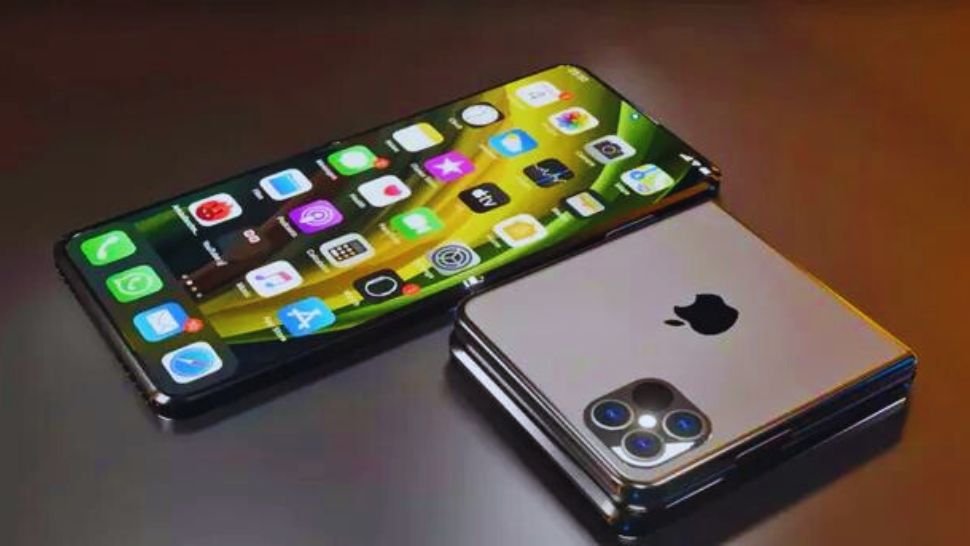
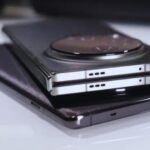
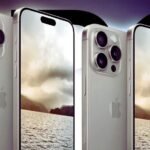
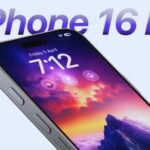
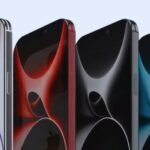
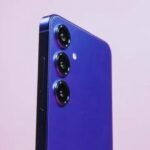
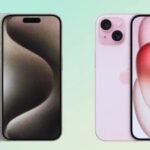
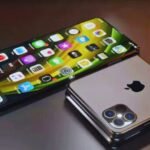
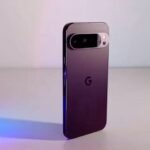
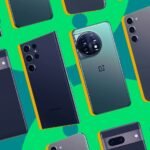
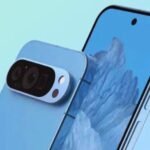
1 thought on “iPhone Flip: Everything We know About Apple’s Foldable Phone Plans”